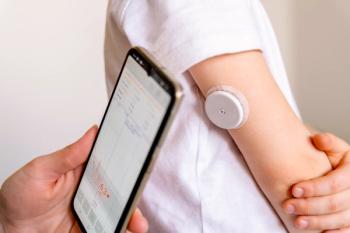
Virtual Visits During COVID-19 May Lead to Better Patient Care in the Future
A rapid increase in telemedicine during the coronavirus disease 2019 pandemic could transform the way care is provided in the United States going forward.
A rapid increase in “virtual” visits during the coronavirus disease 2019 (COVID-19) pandemic could transform the way health care practitioners provide care in the United States going forward, according to a new study led by researchers at the NYU Grossman School of Medicine.
The findings, published in the Journal of the American Informatics Association, capture the largest experience to date of the speed, scale, and rapid expansion of video-enabled visits by patients and providers in varied and diverse settings. The study authors analyzed events between March 2 and April 14, 2020, which showed virtual urgent care visits at NYU Langone Health grew by 683% and the daily averages of non-urgent virtual care visits grew by an unprecedented 4345% percent in response to COVID-19, according to the study.
"The pandemic created an urgent need to divert patients from in-patient care and prevent the flooding of our emergency rooms beyond capacity. Through telemedicine, we pushed the frontlines to locations far from our hospitals and doctor's offices. And because NYU Langone invested early in this technology, we quickly leveraged digital health to help hundreds of thousands of patients,” said lead study author Devin Mann, MD.
In recent years, telemedicine’s growth has been incremental, with only 8% of Americans using these services in 2019, according to the researchers. Outside of rural medicine and prior to COVID-19, there were few compelling reasons to replace in-person care, the study authors noted.
In order to facilitate the rapid expansion of telemedicine visit types, including from home, states relaxed licensing requirements so that care can be delivered across state lines. Additionally, the US Department of Health and Human Services allowed the use of consumer audio and video communication for telemedicine visits.
Using NYU Langone's enterprise electronic health record system Epic, the researchers captured COVID-19-related visits using diagnostic codes containing relevant respiratory issues and matched them with keywords describing symptoms, including fever, shortness of breath, cough, and more.
Over a 6-week period, the investigators found:
- There were 144,940 video visits involving 115,789 unique patients and 2656 unique providers.
- Of all virtual visits, 56.2% of urgent care and 17.6% of non-urgent visits were COVID-19-related.
- The increase in telemedicine urgent care was enabled by a rapid increase in urgent care providers. A pool of 40 emergency medicine providers, managing less than 100 visits on a typical day, grew to 289 "surge" providers from multiple specialties.
- On March 19, NYU Langone Health expanded video visits to all of its ambulatory care settings, reaching more than 7000 visits within 10 days and representing more than 70% of total ambulatory care volume during this time.
- Telemedicine use was highest by patients aged 20 to 44 years, particularly for urgent care. However, patients of all ages were able to use the technology across NYU Langone's telemedicine platform.
- Patients' satisfaction ratings with telemedicine visits remained positive, despite the rapid expansion of the program to thousands of new providers.
"Through this massive expansion, the numbers of providers and patients who experienced telemedicine for the first time increased dramatically, facilitating transformation of technologies and work practices across multiple medical specialties,” said study senior author Oded Nov, PhD, professor and chair of the Department of Technology Management and Innovation at the NYU Tandon School of Engineering, in a press release. “An important question going forward is how much this will continue beyond the COVID pandemic. While we expect patients and providers who got a crash course in telemedicine to continue using it long term, regulators and insurers' decisions will have a major impact.”
According to the report, NYU Langone anticipated that the future of medicine would be in virtual delivery of care so they were uniquely positioned to expand services with tools that they had integrated across the health system. At the forefront of this strategy was ensuring a seamless and positive patient experience, whether an appointment was in-person or via video visit.
Through this new strategy, providers can see patients with COVID remotely at the hospital in ICUs through tablets, which helps save on personal protective equipment and exposure to patients. The use of clinical mobile companions also allows providers to communicate with each other using digital health tools.
Reference
- Telemedicine transforms response to COVID-19 pandemic in disease epicenter [press release]. EurekAlert website. Published April 30, 2020. https://new.eurekalert.org/pub_releases/2020-04/nlh-ttr043020.php. Accessed May 1, 2020.
Newsletter
Stay informed on drug updates, treatment guidelines, and pharmacy practice trends—subscribe to Pharmacy Times for weekly clinical insights.





















































































































































































































